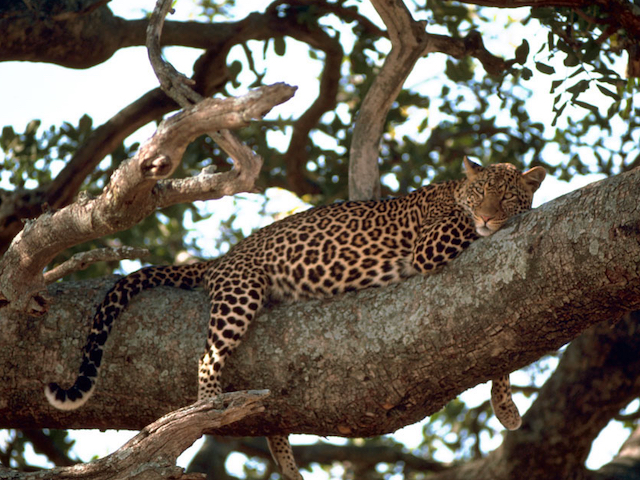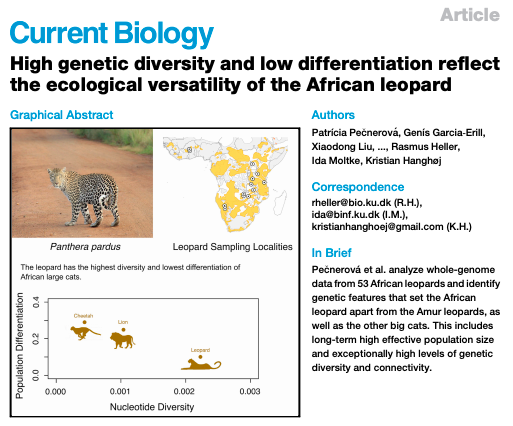A CAT OF ALL TRADES
Leopards are extremely versatile carnivores. They can live in almost any kind of environment and they can eat almost any kind of prey. Add to this that they are super mobile and cover large distances, plus they have this special skill of dragging their prey up the tree, where it's hidden from competition. All of these traits add up to a predator, which has a very distinct evolutionary history compared to all other big cats.

In this team project, we sequenced 57 African leopard individuals and looked at various population genetic indices. To our surprises, we found African leopards very different to the Amur leopards, a sister subspecies from the Far Eastern Russia. Not only that, but African leopards are also genetically very different compared to other African carnivores like lions and cheetahs. What makes them stand out, is the high genetic diversity and population history, which reflects their resilience. Throughout times, African leopards always found a way to survive and thrive, which is uncommon for a species on top of the food chain.
LOCKDOWN PROJECT

This was a truly unique project. We started it with the whole Population and Statistical Genetics group when we were sent to work from home as the first lockdown started in March 2020. The PIs came up with an idea to do a joint project to stay connected. And it ended up being a wonderful experience, because everyone pitched in, did what they were best at, and it was done in the most collaborative way possible. This is how science should work.
Moreover, we had a great chance to learn from each other, to discuss and set best practices for future projects, and we decided to use as thorough and open methodology as possible, which ended with us publishing all our code on github.

